Laser Hair Removal in Poland
Search and Compare the Best Clinics and Doctors at the Lowest Prices for Laser Hair Removal in Poland

Find the best clinics for Laser Hair Removal in Poland
With Medijump you can browse 6 facilities offering Laser Hair Removal procedures in Poland. The cheapest price available is $38 in Gdansk. And for the cheapest price globally, prices start from $3 in India.
Laser Hair Removal in Gdansk
Price: $ 38
India offers the best prices Worldwide
Price: $ 3
From 1 verified reviews
Gosia Kochanska, 04 October 2019
Great professional service. Beautiful, durable and perfectly made permanent makeup.
From 45 verified reviews
Ewa Łazowa, 13 September 2020
Professionalism, a great approach to the client and a nice atmosphere is what I encountered in this salon. I recommend to everyone!
From 137 verified reviews
Daniel Mamrol, 22 September 2020
Many thanks and expressions of respect to Dr. Marta for her full commitment and reliability.I underwent a complete reconstruction of the nose at the doctor's. Unfortunately, after two previously unsuccessful plastic surgeries (in other clinics) and a few fractures, it was necessary to take a zebra specimen, which the doctor coped with perfectly.As long as I remember my nose was my biggest complex, the doctor changed my life and I can look in the mirror with boldness.Many thanks also to the coordinator, Ms Dagmara, and the entire team of the KCM hospital in Jelenia Gora.Full professionalism and willingness to help and care both before and after the procedure.With full awareness and commitment, I can recommend the clinic and the entire hospital team!Before me is a healing process that will bring only good changes.Regards and encourage you to use the services of this hospital!
PRIVE Beauty Hair Gdansk, can be found in Leszczynowa, Gdansk, Poland and offers its patients Laser Hair Removal procedures as well as 6 other procedures, across 3 different procedure categories. The price of a Laser Hair Removal procedure varies from zł150 to zł2,500, and the average price is around zł150. Many medical professionals work at the Clinic, with 4 in total, and PRIVE Beauty Hair Gdansk is accredited by just one known accreditations institute, OIL - Okregowa Izba Lekarska
Oricea, can be found in Pulawska, Warsaw, Poland and offers its patients Laser Hair Removal procedures as well as 3 other procedures, across 1 different procedure categories. At present, there is no pricing information for Laser Hair Removal procedures at Oricea. The pricing information is quite specialised, so it's only available on request, and the average price is around $38. A small team of medical professionals undertake all procedures at the Hospital, with 3 in total, and Oricea is accredited by just one known accreditations institute, ESCAD - European Society for Cosmetic and Aesthetic Dermatology
Medi-Clinique International Ltd, can be found in Aleja Bohaterow Warszawy, Szczecin, Poland and offers its patients Laser Hair Removal procedures as well as 36 other procedures, across 5 different procedure categories. At present, there is no pricing information for Laser Hair Removal procedures at Medi-Clinique International Ltd. The pricing information is quite specialised, so it's only available on request, and the average price is around $38. Many medical professionals work at the Hospital, with 4 in total, and Medi-Clinique International Ltd is not accredited by any recognised accreditations institutions.
- Home
- Poland
Compare Before & After Photos of _procedure_photos.phpLaser Hair Removal

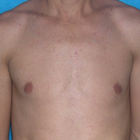
Front view
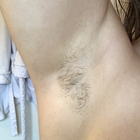
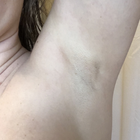
Front view
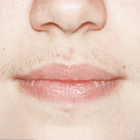
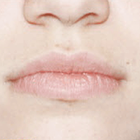
Front view
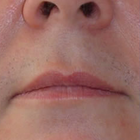
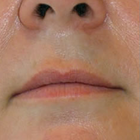
Front view
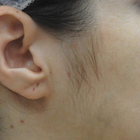
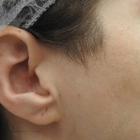
Half-side view

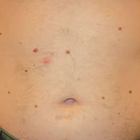
Front view
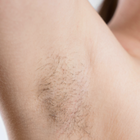

Front view
WHY US?
At Medijump, we're making medical easy. You can search, compare, discuss, and book your medical all in one place. We open the door to the best medical providers worldwide, saving you time and energy along the way, and it's all for FREE, no hidden fees, and no price markups guaranteed. So what are you waiting for?

Free

Best Price

Widest Selection

Risk-Free
What you need to know about Laser Hair Removal in Poland

Gone are the days of having to constantly shave, pluck or wax unwanted hair from your body. We all know how very time consuming these things are, not to mention the pain you have to endure when you pluck or wax your unwanted hair.
Today, we have several options we can choose from before we can bid goodbye to such undesirable body hair. One of the more popular hairs removal procedures is Laser hair removal. The process involves targeting the hair follicles with laser light in order to damage them and prevent any future hair growth. In this, laser energy gets absorbed by the hair pigment, resulting in damage to the hair follicle. Such a procedure prevents hair growth in the future, and the effect could be permanent in many cases.
Laser hair removal can be done in any part of your body. The most common areas include the bikini area, underarms, legs, back, and face.
What is the cost of Laser Hair Removal in Poland?
The expenditure for a Laser Hair Removal within Poland can vary greatly on the basis of numerous aspects. The cost is typically dictated by the expanse of the area undergoing treatment; processes carried out on larger surfaces such as the back or legs could be pricier than those on smaller zones like the upper lip. Other influencing factors include the type of laser technology applied, the count of required sessions, and the credibility and expertise of the clinic or professional administering the treatment.
Considering the wide spectrum of prices across different treatment providers, it's immensely advantageous to undertake comprehensive research and consultations prior to selecting a specific clinic. Some clinics may present package deals for multiple sessions, which could be more economically viable compared to paying for each session separately.
Bear in mind that despite the initial high cost of laser hair removal seeming daunting, the long-term benefits frequently render it a cost-efficient resolution. When you contemplate the ongoing costs of other hair removal options like waxing, shaving, or depilatory creams accumulated over a lifetime, laser hair removal can actually save you both time and money in the grand scheme.
What does a Laser Hair Removal Procedure Involve?
During the procedure, your doctor will press a hand-held laser instrument to the skin area where your unwanted hair is. The laser equipment will be adjusted according to the color, thickness, and location of your hair as well as your skin color. Depending on the laser used, you will be asked to wear eye protection to protect your eyes from the laser beam. A cooling gel or a special cooling device will also be used to protect the outer layers of your skin and lessen the risk of side effects. Your doctor might also apply topical anesthetic to your skin to reduce your discomfort.
Your doctor will then activate the laser; the beam will pass through your skin and to your hair follicles. The heat from the laser beam will now damage the hair follicles; as a result, it will prevent hair growth. You might feel a slight discomfort like a warm pinprick but it will be soothed by the cooling gel or device.
How Long Should I Stay in Poland for a Laser Hair Removal Procedure?
Laser hair removal is done in small areas of your body like your upper lip usually lasts for only a few minutes. In larger areas such as your back, it might take an hour or more. After your procedure has been completed, you will be given ice packs, anti-inflammatory cream or cold water to ease your discomfort. You can go home right after you have undergone the treatment. Furthermore, stitches are not required in this procedure. You may need to schedule multiple sessions, usually 4-6, spaced four to six weeks apart for optimal results.
What's the Recovery Time for Laser Hair Removal Procedures?
Recovery time after a Laser Hair Removal is typically minimal. Minor redness and swelling may occur but usually resolve within a few hours to a few days. According to health experts, it's essential to avoid sun exposure and use sunscreen to protect the treated area during the recovery period, as skin can be particularly sensitive after treatment. For the first two days, it may seem like the treated area was sunburned. Applying a cool compress and moisturizer will help you with your discomfort. If your face was treated, you will not be allowed to wear makeup if your skin is blistering.
It usually takes 2 to 3 weeks to see any difference. You may schedule your next treatment after 4 or 6 weeks. Note that you need to continuously undergo the treatment until your hair stops growing; this may take 8 to 12 treatments before acquiring full results.
What sort of Aftercare is Required for Laser Hair Removal Procedures?
The heat from the laser will stay in your skin for 24 hours so you need to avoid the gym, sauna, or even taking a hot shower. Doing so will increase the risk of bacteria multiplying and giving you spots. Strictly avoiding the sun before and after your procedure is essential, it is also recommended for you to avoid chemical peels for 2 weeks after your procedure. Applying ice packs to the treated area can also reduce swelling or discomfort.
What's the Success Rate of Laser Hair Removal Procedures?
A Laser Hair Removal technique often has a high success rate, with many people reporting a considerable reduction or full eradication of unwanted hair growth. The patient's skin type, hair colour, and the particular body part being treated are all important variables that can affect how well the operation works. For instance, the technique usually works best on those who have dark hair and pale complexion since this allows for optimal targeting of hair follicles.
Additionally, the Laser Hair Removal's success rate is highly impacted by the practitioner's training and experience. Up to 90% of individuals who undergo the operation under the expert guidance of a qualified specialist will experience a permanent hair reduction. It's always best to consult with a qualified professional at a trusted clinic for personalized advice on the expected outcomes and success rate of laser hair removal for your specific circumstances.
Are there Alternatives to Laser Hair Removal Procedures?
If for any reason, you deem the Laser Hair Removal unfitting, there are alternate routes worth your consideration. These include standard techniques like shaving, waxing, and tweezing, which can be effortlessly performed at home. However, be aware that these options may not ensure enduring solutions to undesired hair growth.
That's where professional treatment alternatives make their entrance. Electrolysis, a process that involves a very slender needle infiltrating each hair follicle to obliterate it using an electrical charge, is one such course of action. Though electrolysis could be more labor-intensive than laser hair removal, it has earned a reputation for its efficacy on all varieties of skin and hair.
Furthermore, there exist depilatory creams designed to chemically disintegrate hair at the surface level of the skin. The outcomes of these creams usually extend beyond the typical duration of shaving effects, but they necessitate routine application. As for any novel skin product, conducting a patch test 24 hours before usage to check for allergic reaction is invariably advised.
Lastly, there's IPL (Intense Pulsed Light) that, despite bearing resemblance to laser hair removal, employs a broad spectrum of high-intensity light influencing the deeper structures of the skin. IPL can additionally serve the purpose of treating skin pigmentation issues as well as acne.
Determining the choice among these alternatives will depend on your specific requirements, lifestyle, and financial plan. It's also vital to discuss your prospective options with a healthcare specialist before settling on a final verdict. They are equipped to dispense comprehensive information and counsel, personalized to your distinct circumstances.
How should you prepare for the Laser Hair Removal Procedure?
Completely getting rid of undesirable hair in certain areas of your body can be quite rewarding and it can certainly boost your self-esteem. Laser hair removal eventually eliminates the need for plucking, shaving or waxing. The common body area where this treatment procedure is done includes armpits, bikini line, upper lip, and legs. Although this treatment procedure is possible in almost all parts of the body, the eyelid area is one exemption.
In choosing the right doctor for your procedure, you have to take note of the following:
- A doctor who specializes in dermatology or cosmetic surgery and has experience with laser hair removal.
- If a physician assistant or a licensed nurse will execute the procedure, make sure that your doctor is available on-site for supervision.
Before your actual treatment procedure, you have to schedule a consultation with your chosen doctor. During your consultation, costs, expected results, and possible risks will be discussed with you. Furthermore, your doctor will also review your medical history and determine whether this procedure is the appropriate treatment for you. You may also be advised to do the following before your scheduled day:
- Avoid sun exposure, typically 6 weeks before your treatment and use sunscreen daily.
- Lighten your skin. Your doctor might also prescribe a skin bleaching cream to lighten your skin if you have a darker skin complexion.
- Avoid plucking, waxing electrolysis 4 weeks before your treatment. These other methods of hair removal might disturb your hair follicle.
- Avoid blood-thinning medications like aspirin or anti-inflammatory drugs.
- Shaving and trimming are recommended a day before your treatment procedure. It gets rid of the hair above the skin that can be burned but at the same time, it leaves the hair shaft intact below the surface.
What are the Potential Risks of Laser Hair Removal?
On the rare occasion, a few individuals could encounter minor side effects like skin irritation and changes in pigment. Skin irritation may present as temporary discomfort, redness and swelling at the site of treatment, generally fading away within hours post procedure. Changes in skin pigmentation could involve skin darkening or lightening. These changes are usually temporary but may turn permanent in rare instances.
Moreover, infrequent but severe risks encompass blistering, scarring, alterations in the skin texture, graying of hair in the treated area, and an unusual surge in hair growth surrounding the treated regions. Keep in mind that these risks more likly escalate if the procedure is conducted by an untrained or novice provider or if post-treatment care guidelines are not adhered to rigorously. For instance, sun exposure weeks leading up to and post treatment can amplify the probability of skin lightening.
Whilst the information presented here has been accurately sourced and verified by a medical professional for its accuracy, it is still advised to consult with your doctor before pursuing a medical treatment at one of the listed medical providers
No Time?
Tell us what you're looking for and we'll reachout to the top clinics all at once
Enquire Now

Popular Procedures in Poland
Prices Start From $1

Prices Start From $5

Prices Start From $16

Prices Start From $5

Recommended Medical Centers in Poland for Laser Hair Removal

- Interpreter services
- Translation service
- Religious facilities
- Medical records transfer
- Medical travel insurance
- Health insurance coordination
- TV in the room
- Safe in the room
- Phone in the room
- Private rooms for patients available

- Interpreter services
- Translation service
- Religious facilities
- Medical records transfer
- Medical travel insurance
- Health insurance coordination
- TV in the room
- Safe in the room
- Phone in the room
- Private rooms for patients available

- Interpreter services
- Translation service
- Religious facilities
- Medical records transfer
- Medical travel insurance
- Health insurance coordination
- TV in the room
- Safe in the room
- Phone in the room
- Private rooms for patients available

- Interpreter services
- Translation service
- Religious facilities
- Medical records transfer
- Medical travel insurance
- Health insurance coordination
- TV in the room
- Safe in the room
- Phone in the room
- Private rooms for patients available

- Interpreter services
- Translation service
- Religious facilities
- Medical records transfer
- Medical travel insurance
- Health insurance coordination
- TV in the room
- Safe in the room
- Phone in the room
- Private rooms for patients available

- Interpreter services
- Translation service
- Religious facilities
- Medical records transfer
- Medical travel insurance
- Health insurance coordination
- TV in the room
- Safe in the room
- Phone in the room
- Private rooms for patients available

- Interpreter services
- Translation service
- Religious facilities
- Medical records transfer
- Medical travel insurance
- Health insurance coordination
- TV in the room
- Safe in the room
- Phone in the room
- Private rooms for patients available

- Interpreter services
- Translation service
- Religious facilities
- Medical records transfer
- Medical travel insurance
- Health insurance coordination
- TV in the room
- Safe in the room
- Phone in the room
- Private rooms for patients available

- Interpreter services
- Translation service
- Religious facilities
- Medical records transfer
- Medical travel insurance
- Health insurance coordination
- TV in the room
- Safe in the room
- Phone in the room
- Private rooms for patients available

- Interpreter services
- Translation service
- Religious facilities
- Medical records transfer
- Medical travel insurance
- Health insurance coordination
- TV in the room
- Safe in the room
- Phone in the room
- Private rooms for patients available
Laser Hair Removal in and around Poland
About Poland
Poland, as one of Central Europe's most expansive nations, has only recently begun to make its mark as a key player in the realm of Medical Tourism. Being particularly appealing to tourists from neighboring regions, many visitors arrive seeking Laser Hair Removal procedures. Poland's open border policy further simplifies travel between its territory and other countries within the European Union (EU), making it an accessible destination for many.
The Polish healthcare system comprises a blend of public and private establishments. While none of these facilities hold JCI accreditation, they are endorsed by local accreditations issued by the Polish Ministry of Health. Their recognition within the European Union testifies to the quality and reliability of these certifying bodies.
In Poland, the most frequently sought-after medical procedures encompass dental, cosmetic, orthopedic, and bariatric treatments. Impressively, the costs of these treatments are significantly lower than what one would expect to pay in Poland's Western European counterparts. Beyond Poland's vibrant capital, Warsaw, cities such as Krakow, Jelenia Gora, and Wroclaw have emerged as favored destinations among medical tourists.
Popular Parts of Poland
Poland, with a population exceeding 38.5 million, is a nation steeped in rich history and recognized for its whopping fourteen UNESCO World Heritage Sites. Despite frequently being overshadowed in the realm of tourism, the country in reality, boasts of a multitude of alluring attractions waiting to be explored and appreciated.
- Warsaw, Poland’s capital provides tourists with a mix of old and new. Restored Gothic buildings and modern glass structures stand side by side. The city offers a scenic view. Wander around the streets of Old Town to see the oldest part of the city. Warsaw was also the former home of Frederic François Chopin; tourists can retrace his steps by visiting Saxon Garden, where Chopin’s family used to live next door.
- Krakow is Poland’s former capital. The city is full of charms; from cobbled streets, beautiful squares, pretty buildings, churches, and a castle. Wawel Castle, located in the Old Town area, is an architectural wonder with medieval, baroque, and renaissance style. The city has numerous museums that provide insights into its fascinating history.
- Gdansk stands as one of the country's most breathtaking seaside cities. It houses some of the finest museums in Poland and is renowned for its thriving nightlife and diverse culinary scene. Visitors are encouraged to admire the vibrant street art, delve into history at the numerous museums, explore the charms of the Old Town, and embark on a gastronomic adventure with a food tour in Gdynia. In a nutshell, Gdansk offers a rich and memorable travel experience.
- Poznan will amaze tourists once they see its vibrant, playful, and unique treasures. As the birthplace of the Polish nation, the city offers many historical attractions as well as urban green spaces. Tour the Lech Brewery to learn more about the brewing process of beer visit the Old Market Square and find an array of bars and food stalls.
- Wroclaw is not as popular as other cities in Poland. It’s actually full of attractions, incredible architecture, and hidden gems. Tourists will find dwarf statues throughout the city and can go on the dwarf trail. Market Square is the city’s centerpiece that blends colorful buildings and gives a scenic view, especially in winters.
Weather and Climate in Poland
Poland has a temperate climate and sometimes experiences rough weather. Spring starts in late March to May. The season is characterized by a wave of warmer weather with less frequent rain. It is one of the best times to visit Poland because the temperature is comfortable.
Poland's summer season extends from June until August and brings with it a certain unpredictability in weather patterns. The general climate is warm, with temperatures hovering between 18 to 30°C. Amidst sunny spells and elevated temperatures, frequent rain showers and storms are also common phenomena. This period marks the peak of the tourism season and tourists can expect prices to see a corresponding increase. Despite the occasional rains, summer promises a delightful time to experience Poland in all its warmth.
September to November is Autumn, the season where the temperature starts to drop. Late September and October are still warm, while November is cold and wet. Sunny days during this season are known as “Polish Golden Autumn.”
Winter in Poland, which runs from December until early March, can be exceedingly cold. Temperatures often tumble to an average range of 0 to -10°C and can even drop as low as -20°C. Despite the chilly conditions, this is actually the peak season for mountain ski resorts, attracting numerous enthusiasts to take advantage of Poland's picturesque winter landscapes.
Getting Around in Poland
Most international flights arrive at Warsaw Frederic Chopin Airport. It’s Poland’s largest and busiest airport. The airport serves domestic and has International connections with many cities around the world. It is the hub for LOT Polish Airlines. Budget airlines such as Wizz Air and EasyJet also operate flights from this airport. There is a smaller airport, Warsaw Modlin Airport, which handles more budget airlines.
To get to the city center, bus, taxi, and train are available. There are five public buses that stop at Warsaw’s city center; bus 175, bus 188, bus 148, bus 331, and bus N32 (night bus). Taxis are available, but always make sure to use licensed taxi services. The fare from the airport to the city center is around 40 PLN. Chopin Airport is linked to Legionowo and Sulejówek Miłosna by a railway service. Tourists can buy ZTM tickets to ride the bus and train which can be purchased at the Passenger Information Point in the arrivals hall, ticket machines at bus stops and train station entrance, or from bus drivers.
Ample public transportation options simplify getting around in Poland. Trains, in particular, offer an incredibly budget-friendly means of travel. For instance, the journey from Krakow to Warsaw is set to cost approximately 45 PLN and spans a duration of around three hours. Meanwhile, a slightly longer five-hour train journey from Warsaw to Gdansk can be undertaken at a reasonable fare of around 65 PLN. Such connectivity and affordability make exploration within Poland both easy and economical.
Within the cities, local buses in the central zone cost around 4 PLN (a single-fare ticket). Major cities offer one-day tickets for 20 PLN. Taxis are relatively cheap and tourists can get around the city quickly. Taxis are metered and usually start at around 6 PLN to 8 PLN. Unlicensed taxi drivers are most likely to cheat and charge more. There are taxis that put a fake phone number in their cars, be careful and ask your hotel staff for the number of the taxi company they have used previously. Cycling is a good way to explore the scenery in Poland. There are many bike rentals around the country, always be aware of drivers since some are careless.
For cities like Krakow, tourists are highly recommended to secure tourist cards. These cards provide unlimited access to public transportation for a period of one to three days. In addition, they also offer free or discounted admission to several museums. This is a great bargains that grants tourists flexibility and sizable savings to fully relish their visit.
Tourist Visas in Poland
Poland is part of the Schengen Area. Citizens of the United States, Canada, Australia, New Zealand, Japan, Israel, and several other countries do not need to obtain a visa and can stay in Poland for up to 90 days. EU citizens do not need a visa and can stay indefinitely. Other nationalities must check with their local Polish embassy. All visitors must hold a passport valid for at least six months.
Additional Information about Visa in Poland:
- It is important to note that the visa requirements for Poland can change at any time, so it is always best to check with the Polish embassy or consulate in your home country before you travel.
- If you are planning to stay in Poland for longer than 90 days, you will need to apply for a visa. You can do this at the Polish embassy or consulate in your home country.
- When applying for a visa, you will need to provide a number of documents, including a valid passport, proof of travel insurance, and proof of financial means.
Additional Information
- Local Currency: the official currency is the Polish złoty (PLN). 1 USD converts to 4.21 PLN.
- Money & Payments: ATMs are available in cities and towns; even small villages should have at least one. The best way to exchange rates is at banks or withdrawing money from ATMs. Credit cards (Visa and MasterCard) are accepted in most hotels and restaurants. Always carry small cash and coins for shops and cafes. Tipping in Poland is mostly optional. In restaurants, 10% is the standard. Room-service staff and porters in hotels expect to be tipped. Taxis don’t expect tips.
- Local Language: The official language is Polish. Most of the locals in the tourist areas will have decent English. Foreign tourists should be aware that all official information including street signs and directions are only written in Polish.
- Local Culture and Religion: Christianity is the largest religion in Poland with 87.5% of the population identified as Roman Catholic.
- Public Holidays: Poland celebrates major Christian holidays such as Christmas and Easter. The country hosts many festivals throughout the year such as St. Dominik’s Fair every July to August, Light & Move Festival every October, and Ice Festival every December.
Popular Searches
- Plastic Surgery in Thailand
- Dental Implants in Thailand
- Hair Transplant in Thailand
- Breast Augmentation Thailand
- Gastric Sleeve in Thailand
- Gender Reassignment Surgery in Thailand
- Laser Hair Removal in Bangkok
- Botox in Bangkok
- Dermatology in Bangkok
- Breast Augmentation in Bangkok
- Coolsculpting in Bangkok
- Veneers in Turkey
- Hair Transplant in Turkey
- Rhinoplasty in Turkey
- Stem Cell Therapy in Mexico
- Rhinoplasty in Mexico
- Liposuction in Mexico
- Coolsculpting in Tijuana
- Rhinoplasty in Korea
- Scar Removal in Korea
- Gastric Sleeve in Turkey
- Bone Marrow Transplant in India
- Invisalign in Malaysia
- Plastic Surgery in the Dominican Republic
- Tummy Tuck in the Dominican Republic
- Plastic and Cosmetic Surgery in Poland
- Rhinoplasty in Poland
- Hair Implant in Poland
- Dental Implants in Poland
- IVF in Turkey





